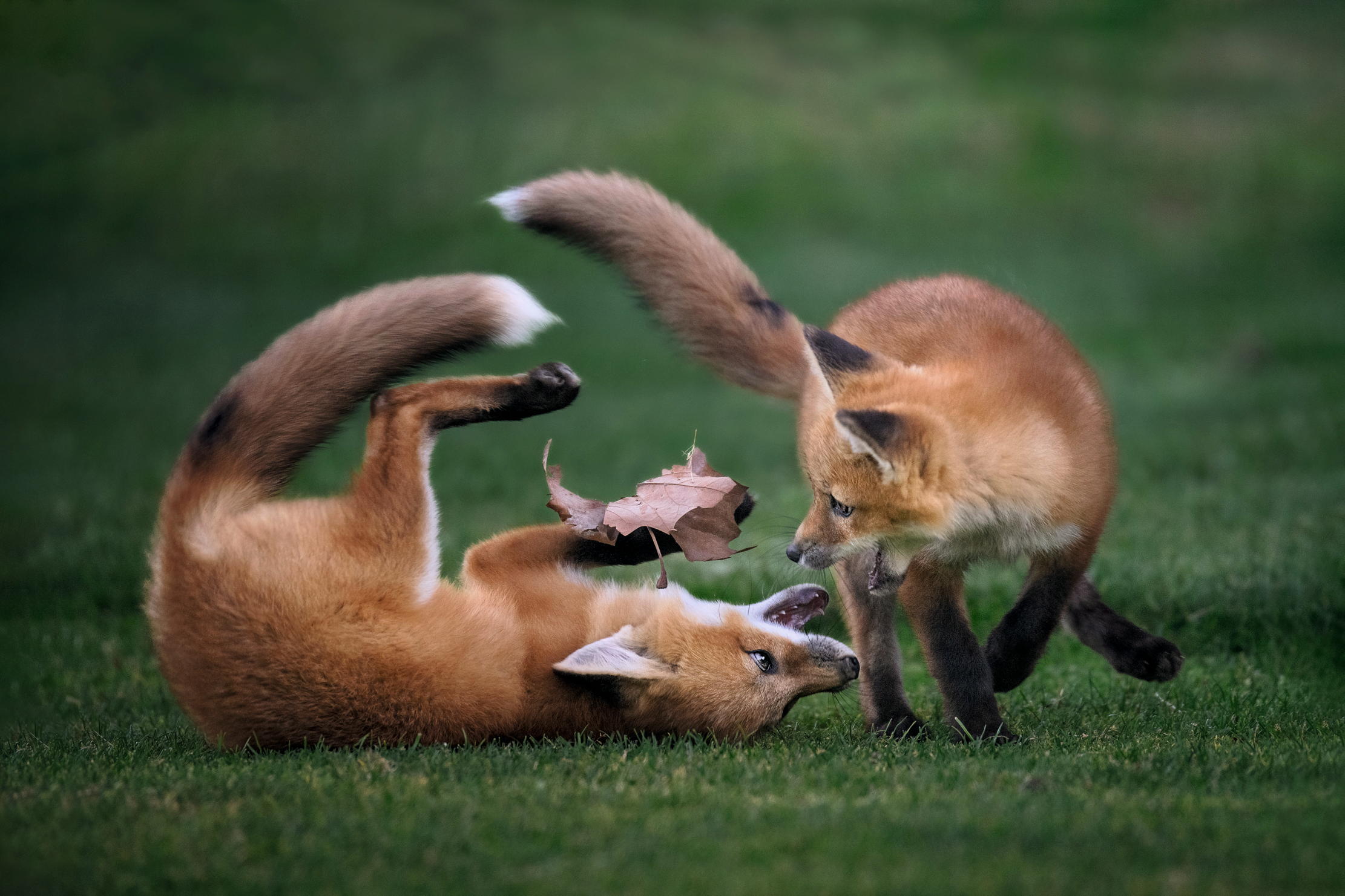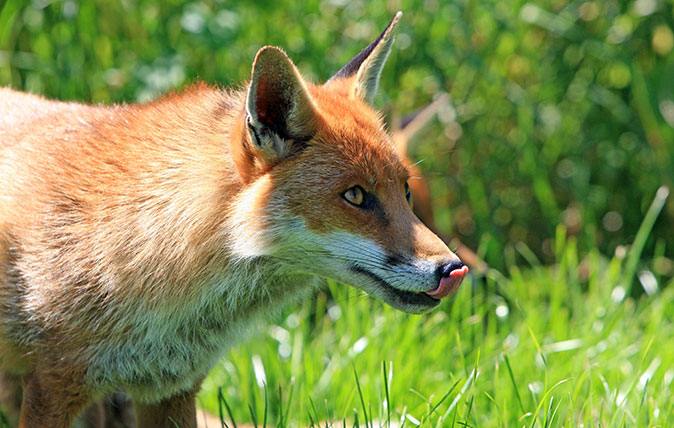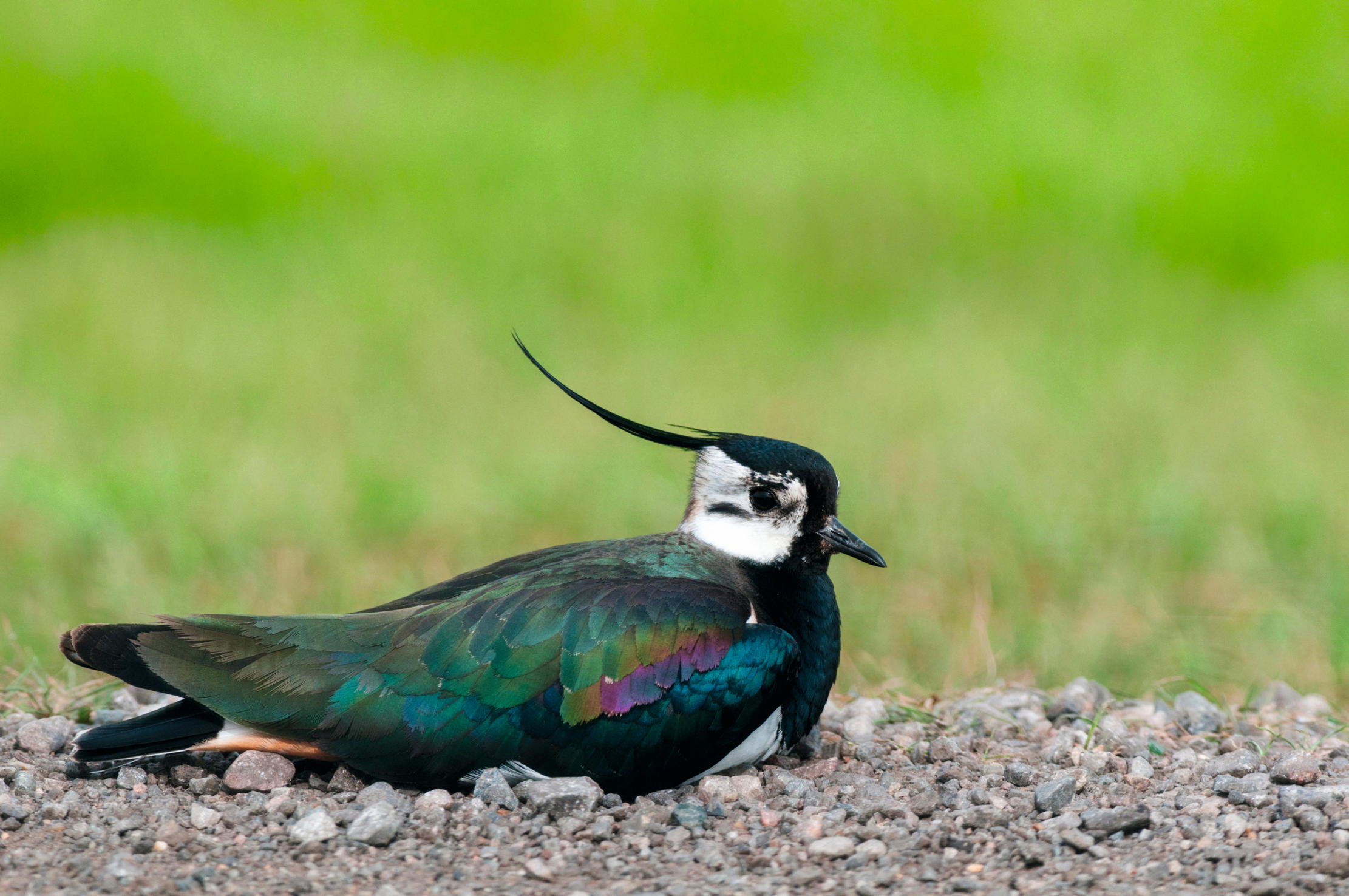Curious Questions: Why do so many animals have bright white bottoms?
Why do so many animals have such obviously flashy appendages, asks Laura Parker, as she examines scuts, rumps and rears.


Generally, wildlife sees us before we see it. It’s rare to have the kind of face-to-face encounter that American writer Annie Dillard experienced when she unexpectedly came across a weasel and became locked in its gaze for so long she felt they were like lovers, exchanging brains: ‘The world dismantled and tumbled into that black hole of eyes.’
It seems strange that animals so keen to keep out of sight have such attention-grabbing features. Rabbits often freeze, blending against a bare winter hedge or molehills and rocks, but, once they run, their snowy tails immediately give them away. It is the same with roe deer. Motionless on winter barley or stubble, they merge with the scenery, but, when they scamper off, there go those flashing white beacons that seem to say: ‘Hey, look over here!’ Humorous cartoonist Gary Larson drew on that vein in one of his most familiar works: a deer, standing upright, displays a large bullseye target on its chest. ‘Bummer of a birthmark, Hal,’ his friend observes.
Why do so many prey animals have such obviously flashy appendages? In rabbits and some deer, the short, white, erect tails are known as scuts. Beatrix Potter captured these pristine puffs perfectly as they peeked pertly below the blue jacket and pink cloaks worn by Peter Rabbit and his sisters Flopsy, Mopsy and, of course, Cotton-tail. In Richard Adams’s seminal 1972 novel Watership Down, the scut is explained through a lapine creation myth. Irritated by the rabbits’ fecundity and refusal to cooperate, sun god Frith provides the fox and the weasel with cunning, fierceness — and the desire to hunt rabbits. Seeking out the impudent rabbit leader, by now digging frantically to avoid his new enemies, the deity bestows two gifts upon the visible anatomy. Thus were the rabbit’s back legs made more powerful and his tail ‘grew shining white and flashed like a star’. He had been given both speed and warning.

The main purpose of a rabbit’s highly visible fluff is to alert others in the group to potential danger. We could assume that this visual signal is also what makes them fair game to their many natural predators, including foxes, cats, stoats, polecats, badgers, buzzards and weasels. However, although many of these hunters have good eyesight, they will also use their other finely honed senses, such as smell and hearing. When it comes to remaining undetected, having a giveaway white tail may be the least of the rabbits’ worries — more than 90% die in their first year of life, most of those in the first three months.
Hares also have scuts, black on top and white beneath. Unlike rabbits, they hold their tails down when they run, so the white underside cannot be seen as clearly. ‘Hares are solitary, unlike rabbits who live in social groupings, so do not use tail flagging to warn others about threats,’ explains Sue Alderman of the Hare Preservation Trust. Hares live for three to four years, but few rabbits make it that long. Although it is tempting to ascribe the hare’s relative longevity to its greater discretion with its tail signal, it is more likely that its keen hearing and immense turn of speed — 45mph at full pelt — are what help it to survive for longer.
For most creatures, tails are extraordinarily useful, having evolved to serve a range of purposes. Insects use them to sting with. Fishes and reptiles employ them as rudders. Many lizards can regenerate their tails if caught by a predator. Birds find them helpful to stay airborne. There are tails that swish away flies (cattle and horses), tails that attract females (peacocks and black grouse) and tails that act as extra limbs (spider monkeys and harvest mice). The scut, despite covering vulnerable parts to some extent, appears to have no special purpose other than as a signal.

Could the rear white flag have any evolutionary advantage? One suggestion is that a visible tail can act as a cunning lure, focusing a predator’s attention until the prey animal does a rapid turn, causing the marker to disappear and the marauder to become discombobulated. Another theory is that, although having an attention-grabbing tail may contribute to one animal being sacrificed, its use as an alert helps to preserve others. Evolution is much more concerned with the majority rather than the individual.
Exquisite houses, the beauty of Nature, and how to get the most from your life, straight to your inbox.
Both of our indigenous species of deer, the red and the roe, have a visibly pale rump. The roe deer’s white rump flares to become much more visible when it is startled, acting as a silent alarm signal to other members of the group. Of the four other deer species, which are relative newcomers, the fallow deer, introduced by the Normans, has a white rump within a heart-shaped black border. Of the three Asiatic deer species that have arrived within the past couple of centuries, the sika also has a white rump, the Reeves’s muntjac has a narrow scut that flips up during flight and the Chinese water deer has neither — although it is disposed to flare its back end when alarmed.
As British deer no longer have wild natural predators, their greatest threat is from a species that relies heavily on sight: a person with a gun. Asked if he finds white rumps or scuts a useful cue when shooting, Johnny Mazower, an Oxfordshire deer manager who supplies sustainable venison from the excess roe, fallow and muntjac that he is permitted to cull on local farms, is quick to make a correction. ‘If you’re aiming at the backside, you’re doing something very wrong indeed. All UK deer stalkers are trained to shoot the heart and lung area, where there aren’t any particular markings,’ he explains.

Louise Gray, a deerstalker and writer who helps manage Ben Damph estate in the Highlands, says that the markings have limited use when looking for red deer: ‘Although the roe deer flashes bright, the darker red-deer rump does not really help the stalker.’
Mr Mazower believes that one function of the white deer rump is to make it easier for the young to follow a doe in dim light. This trait has been noticed in another bearer of distinctive tail markings, the fox. Most foxes have brushes with white tips known as brush tags and these are present on a cub even before it is born. The tag may help to guide cubs learning to hunt with their parents. Adult foxes have been observed following each other through dense vegetation in poor light, the one behind paying close attention to the white tip of the one in front, although their long and super-sensitive whiskers, known as vibrissae, will also be giving them detailed feedback. The brush tag may play a role in sexual selection, a bright-white tip seemingly being more attractive than a dingy one.

Foxes in the northern parts of Europe have longer white tips than southern foxes, but the significance of this is not clear. It has been posited that the tip may play a sacrificial role in survival, offering a pursuant hound something to snatch at, relatively harmlessly.
The need for a fox’s tail is confirmed by Aesop. His fable The Fox Without a Tail is about a fox who has lost his brush in a trap. He tries to persuade the other foxes that he is now better off without his tail and they could be, too. Tails, he tells them, are mere encumbrances that slow foxes down, get covered in muck and become caught in briars. As he is advising them to cut their brushes off for a better life, a wise grey elder points out that he would not be making this argument had he still had a tail. The moral of the tale is not to listen to someone who tries to talk you down to their level.
A white tail or rump is principally a helpful signal to other animals of the same species. It can occasionally attract — or confuse — a predator. For most of us, out and about in the countryside looking out for wildlife, it is a handy visual prompt. Even if it is usually attached to the disappearing rear view of an animal hastening away to avoid us.

Credit: Fox licking his lips. Picture: pixabay.com via pexels.com
Jason Goodwin: The foxes are unashamedly cocky – but the badgers are even worse
Our columnist takes a look at the new breed of foxes invading the countryside, and the havoc both they and

The Lapwing, the bird with dozens names that is 'one of the most evocative sights and sounds of the countryside'
Often preceded by its otherworldly call, the jaunty emerald-and-purple lapwing is an increasingly rare presence in southern England, says Vicky

Credit: Jonathan Wilson/iStock via Getty Images
The truth about rewilding, by seven of Britain's most influential farmers, landowners and conservationists
Although the term 'rewilding' is contentious, most agree that our countryside could be better managed for wildlife. Yet what should
Laura Parker is a countryside writer who contributes to the Scottish Field, the Dundee Courier and Little Toller’s nature journal The Clearing. She lives in the Cotswolds and keeps a small flock of Shetland sheep. You can follow her on X and Instagram: @laura_parkle.
